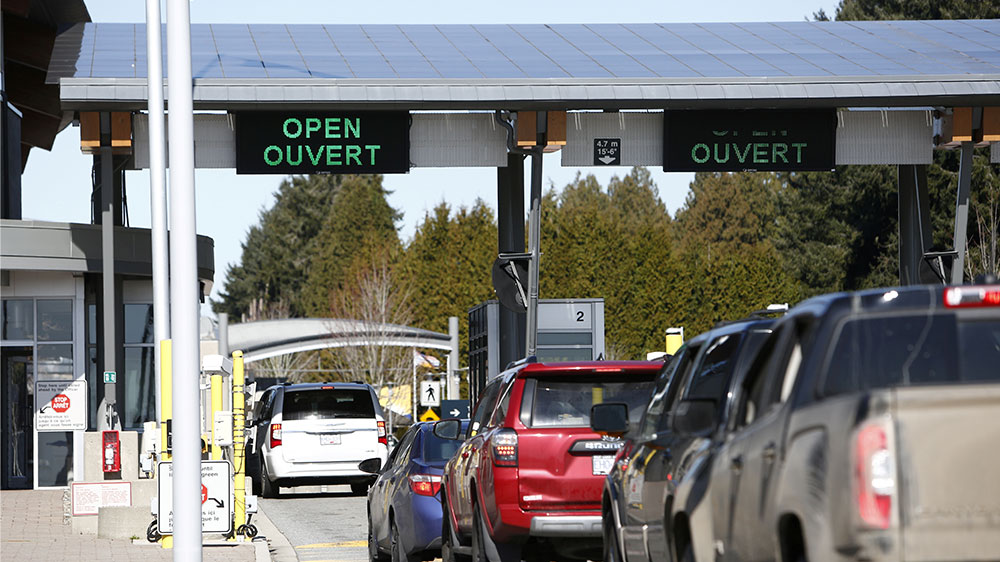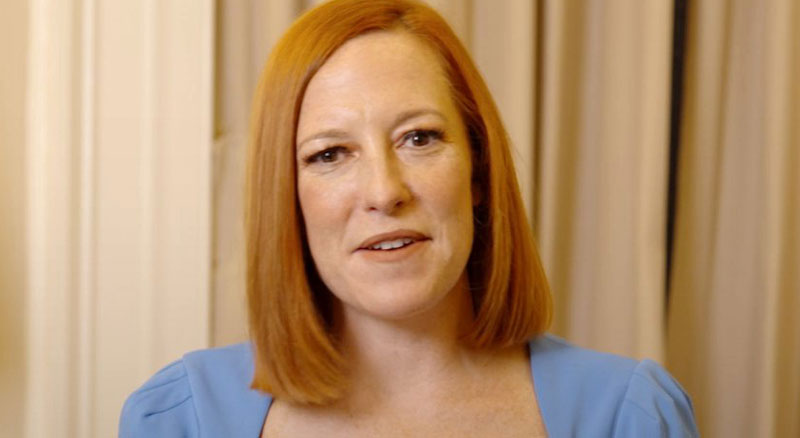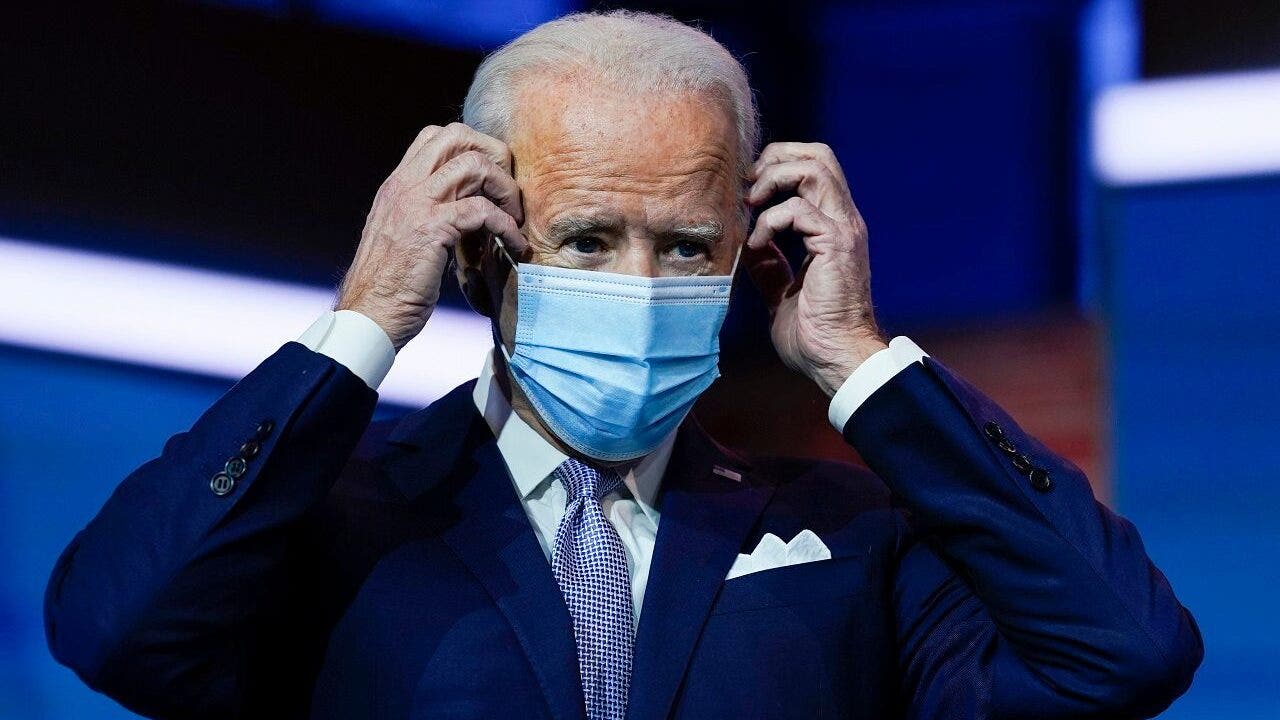Along the Canada-US border, residents eagerly await reopening | Business and Economy News
Since the US-Canada border closed to non-essential traffic 20 months ago over coronavirus fears, Auntie Pam’s Country Store has been cut off from 75 percent of its customers – literally.
Selling an eclectic mix of penny candies, homemade soaps, knitwear, imported dresses and basic essentials, the store sits in Point Roberts, Washington, a western US town surrounded by water on three sides and connected by land only to Canada. Roughly three-quarters of the area’s homeowners are Canadians who have been cut off from their properties by the closure.
Sales have dropped 90 percent since March 2020 when the border closed to non-essential travel, said Pam Sheppard, the store’s owner, known locally as Auntie Pam. Most other businesses in the community of fewer than 2,000 residents are also in dire financial straights, she added.
“It has been devastating … I am just hanging on,” Sheppard told Al Jazeera. “It’s glum when you own a store and you walk into the middle of the road and don’t see a car for 25 minutes.”
If not for US government financial aid during the pandemic, and a decision by her landlord to reduce her rent when sales slumped, the business certainly would have closed down, Sheppard said. Currently, she can only afford to stay open three days a week.
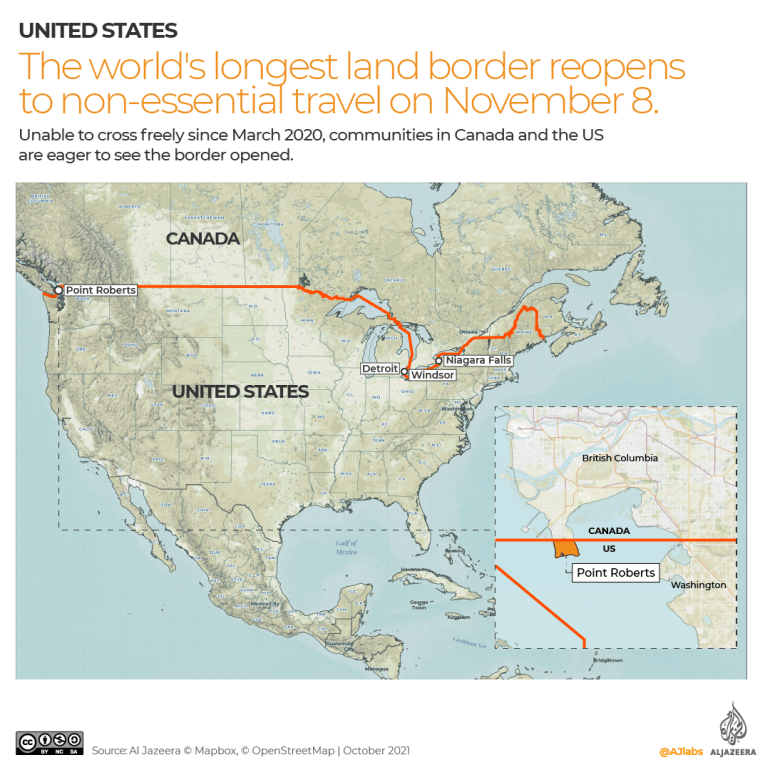 (Al Jazeera)
(Al Jazeera)While the border closure has been particularly dire for Point Roberts due to its unique geography, towns and businesses all along the 49th parallel have struggled without tourism dollars and visits from their neighbours.
With the world’s longest land border opening for non-essential travel to fully vaccinated tourists next week, tens of thousands of residents in both countries who have family or business ties with their neighbours are excited.
Like ‘visiting a neighbour’
“This is something we have been really looking forward to; it is a great step forward,” said Rakesh Naidu, president and CEO of the Windsor-Essex Chamber of Commerce, a business group in the Canadian city of Windsor adjacent to Detroit.
“This is a border region: for us crossing the border and doing business is second nature,” the former auto manufacturing executive told Al Jazeera.
Canada has allowed fully vaccinated Americans to cross the land border since August 9; the US is opening its land border to fully vaccinated Canadians on November 8.
The entry rules will be slightly different for each country. Americans entering Canada will need to have a negative PCR test for COVID-19 taken in the previous 72 hours. Canadians entering the US by land will not have to provide such a test, but they do need a negative coronavirus test when entering the US by air.
Before the land border closure last year, it would be common for Windsor residents to cross the border two to three times a week to meet friends or business colleagues, Naidu said.
“Many Americans own property on the Canadian side and visa versa. It would be normal for Americans to come to the wineries, shop or spend time at Caesars casino,” he added. “It was just like visiting a neighbouring community.”
Essential travel, including cross-border shipping and transit for key workers such as healthcare staff, has continued throughout the pandemic.
Nearly $1.6bn in goods cross the border each day, according to the shipping company Purolator International.
About one-third of that trade transits through the Windsor-Detroit corridor, Naidu said, and some 7,000 Canadian nurses commute across the border daily to work in US hospitals.
In the auto industry, crucial in both Detroit and Windsor, it’s not uncommon for components to move back and forth across the border half a dozen times during the assembly process before a completed vehicle rolls off the assembly line, he said, underscoring the degree of economic integration between the two countries.
“For our local small- and medium-sized businesses, roughly 25 percent of their revenue comes from Americans who come in as travellers,” Naidu said. “That revenue was pretty much eliminated when the restrictions came into place.”
Frustration over slow reopening
Like other businesspeople working in the border region, John Kinney believed the reopening is coming too late. He said COVID-19 restrictions have sometimes been haphazard and contradictory.
For example, tourists have been able to fly between Canada and the US for months, with evolving rules related to coronavirus tests, quarantines, and vaccinations, but crossing the border by car for non-essential trips has been prohibited.
“Unfortunately, the horse is out of the barn door and figuratively opening the barn door isn’t going to help us at this point,” Kinney told Al Jazeera.
He is president of Whirlpool Jet Boat Tours, an adventure travel outfit operating on both sides of the border in Niagara Falls, where the Canadian province of Ontario is linked by bridge to the US state of New York. Kinney’s company sends fast boats splashing through rapids leading up to the largest waterfalls in North America.
“White water jet boating is a predominately May-October business. We hoped the border would reopen during June through August. That didn’t happen,” Kinney said.
“Our business on the Canadian side really took another knee to the gut in 2021. When the vaccines were announced in October 2020, the last thing I envisioned was that 2021 would be a carbon copy from 2020, but that’s exactly what happened.”
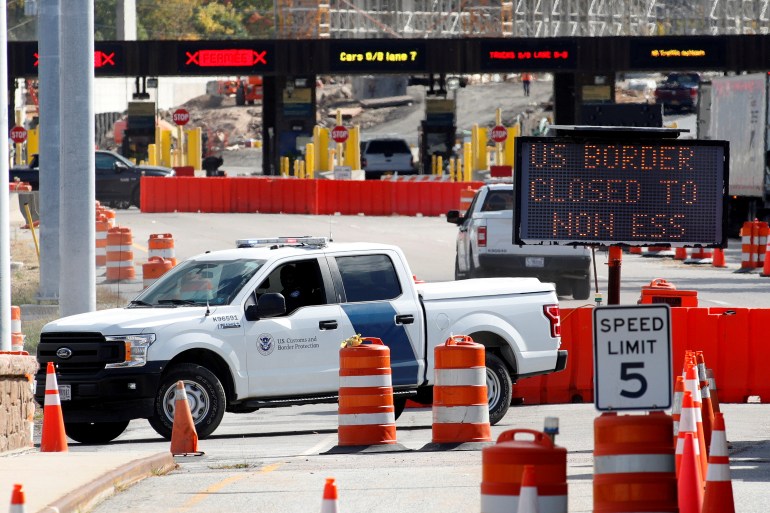 The US-Canada border has been closed to non-essential travel since March 2020 due to COVID-19 fears [File: Lars Hagberg/Reuters]
The US-Canada border has been closed to non-essential travel since March 2020 due to COVID-19 fears [File: Lars Hagberg/Reuters]His business has dropped about 80 percent during the pandemic and the company that once employed about 200 people now has just 22 full-time staff, he said.
The border easily could have opened under the current rules in May, he said, saving the summer operating season.
He does not expect the tourism industry to make a full recovery for at least four years.
Even with the border reopening, travellers entering Canada will need to show a negative recent PCR test for COVID-19, which could complicate recovery plans in communities like Niagara Falls, Point Roberts and Windsor.
Still, in Point Roberts residents are getting ready to celebrate the reopening and reuniting with friends and neighbours, Pam Sheppard said.
“I just can’t wait to see my people … my customers became my friends pretty rapidly,” she said. “They’re all gearing up to come back.”

